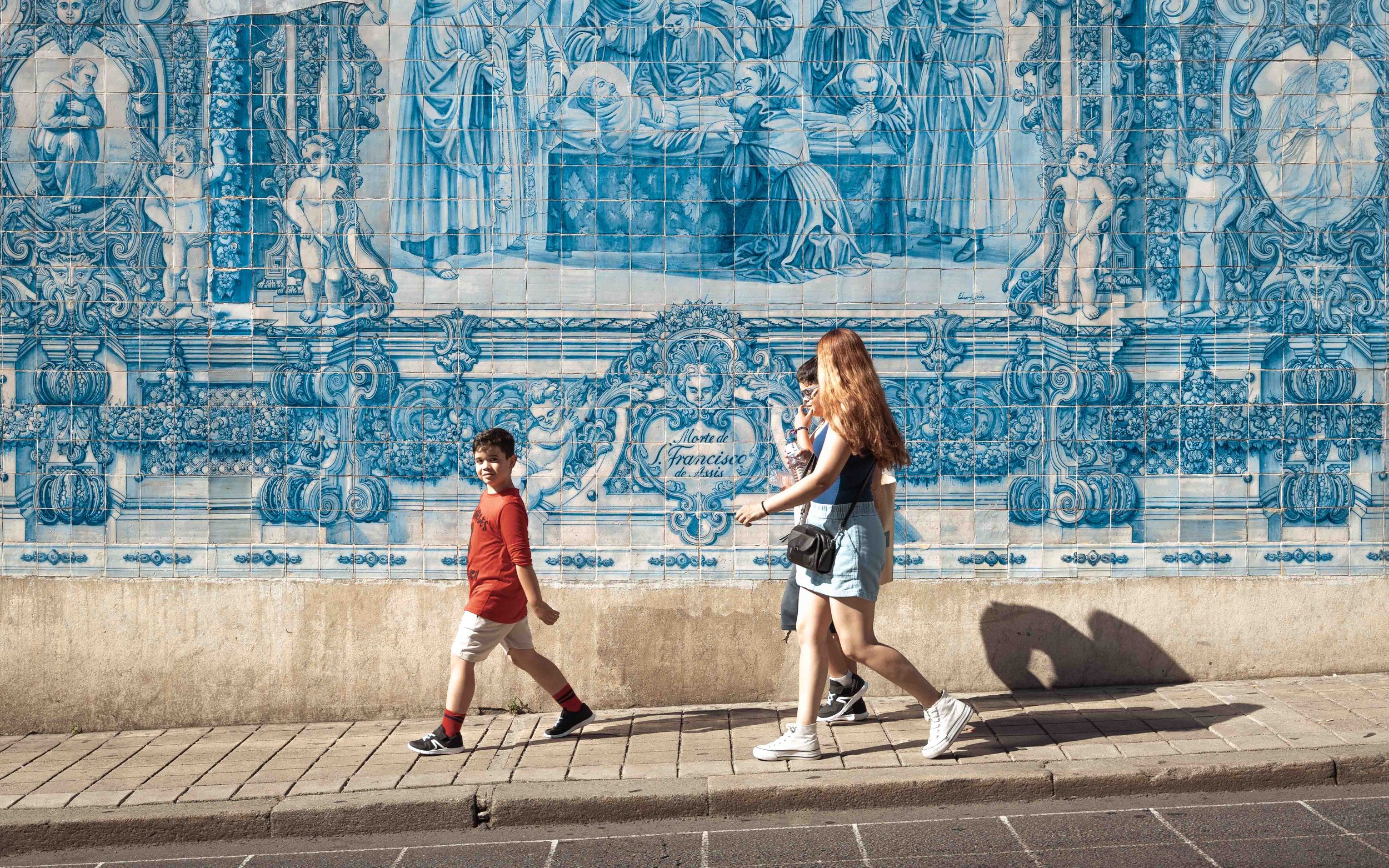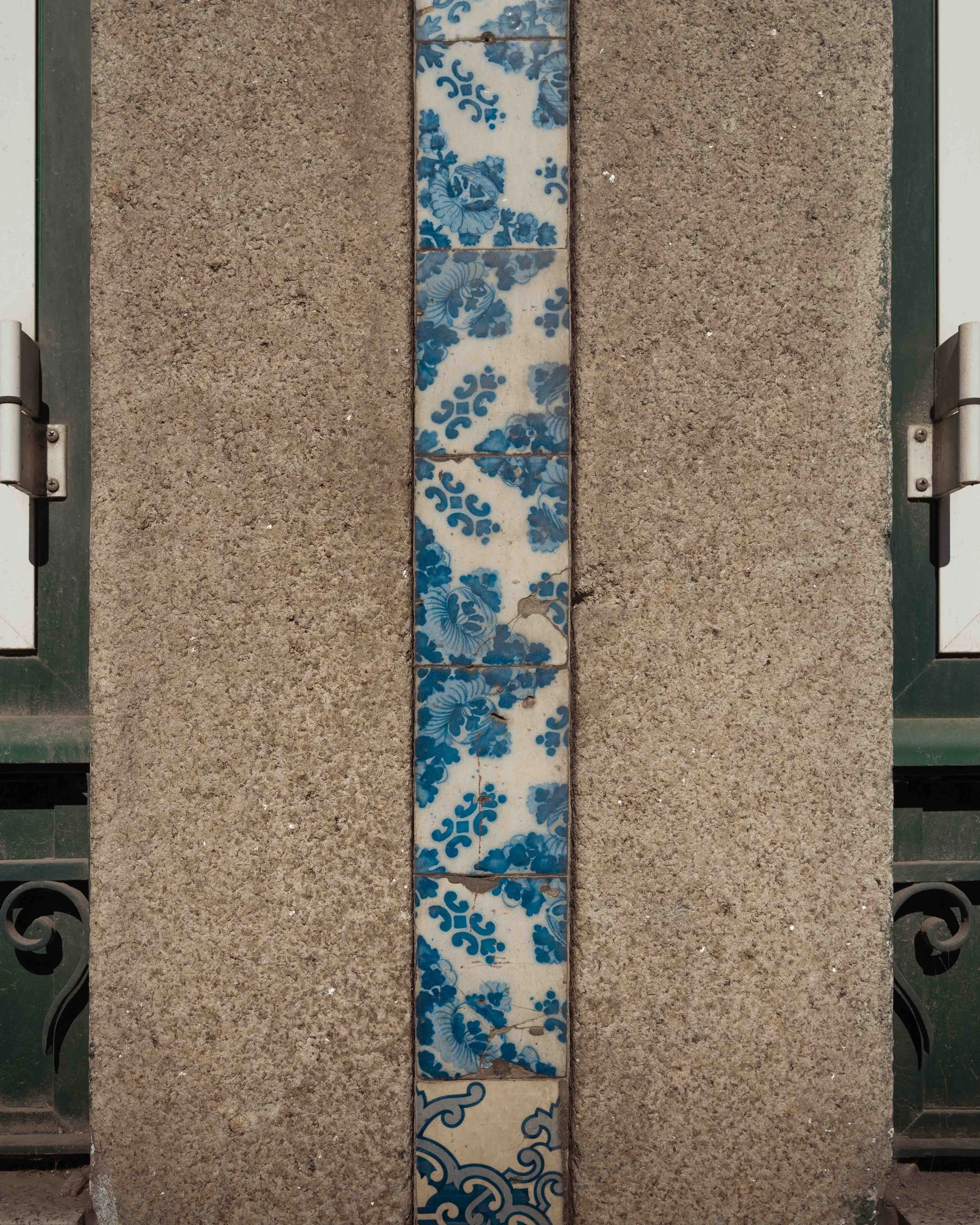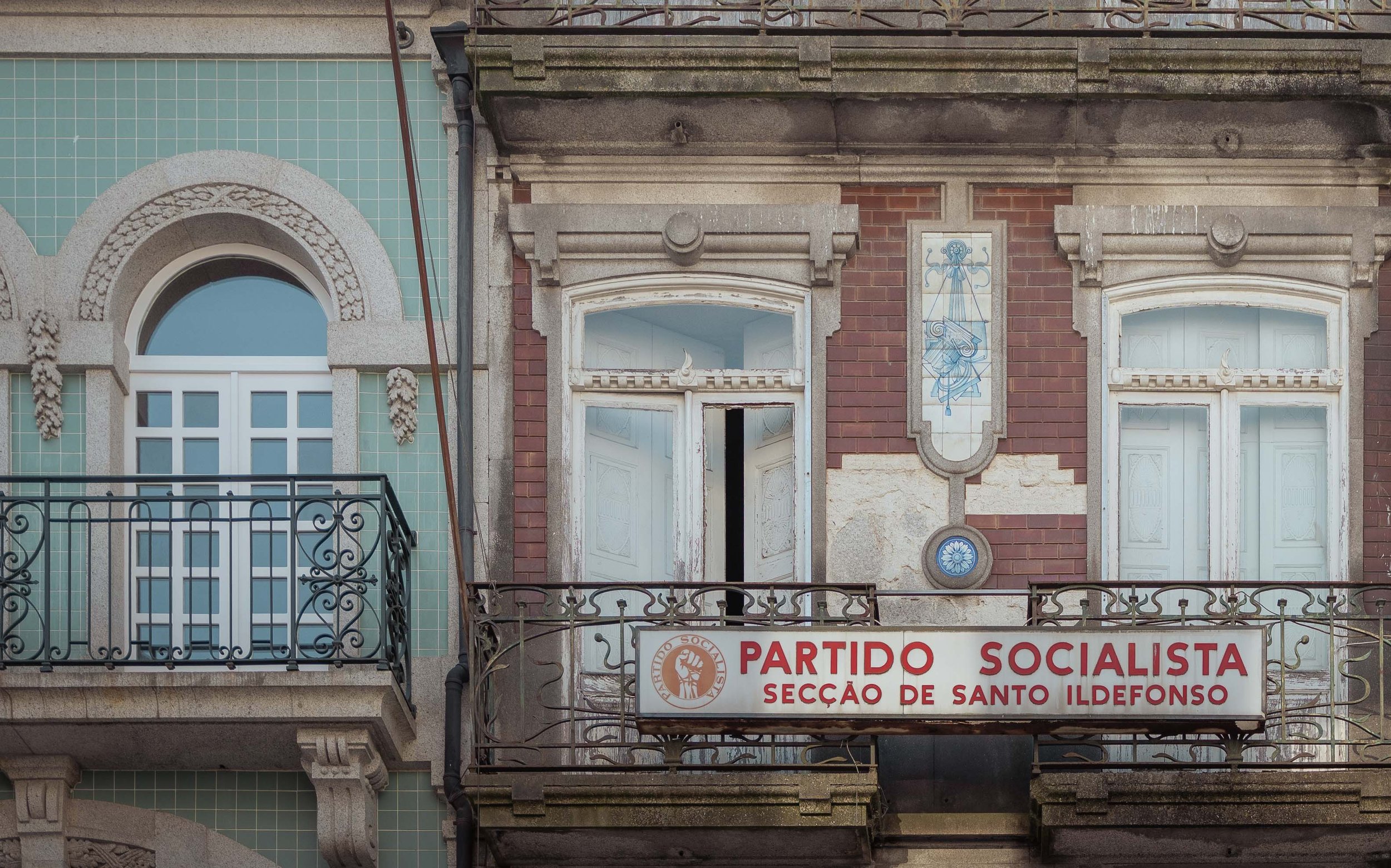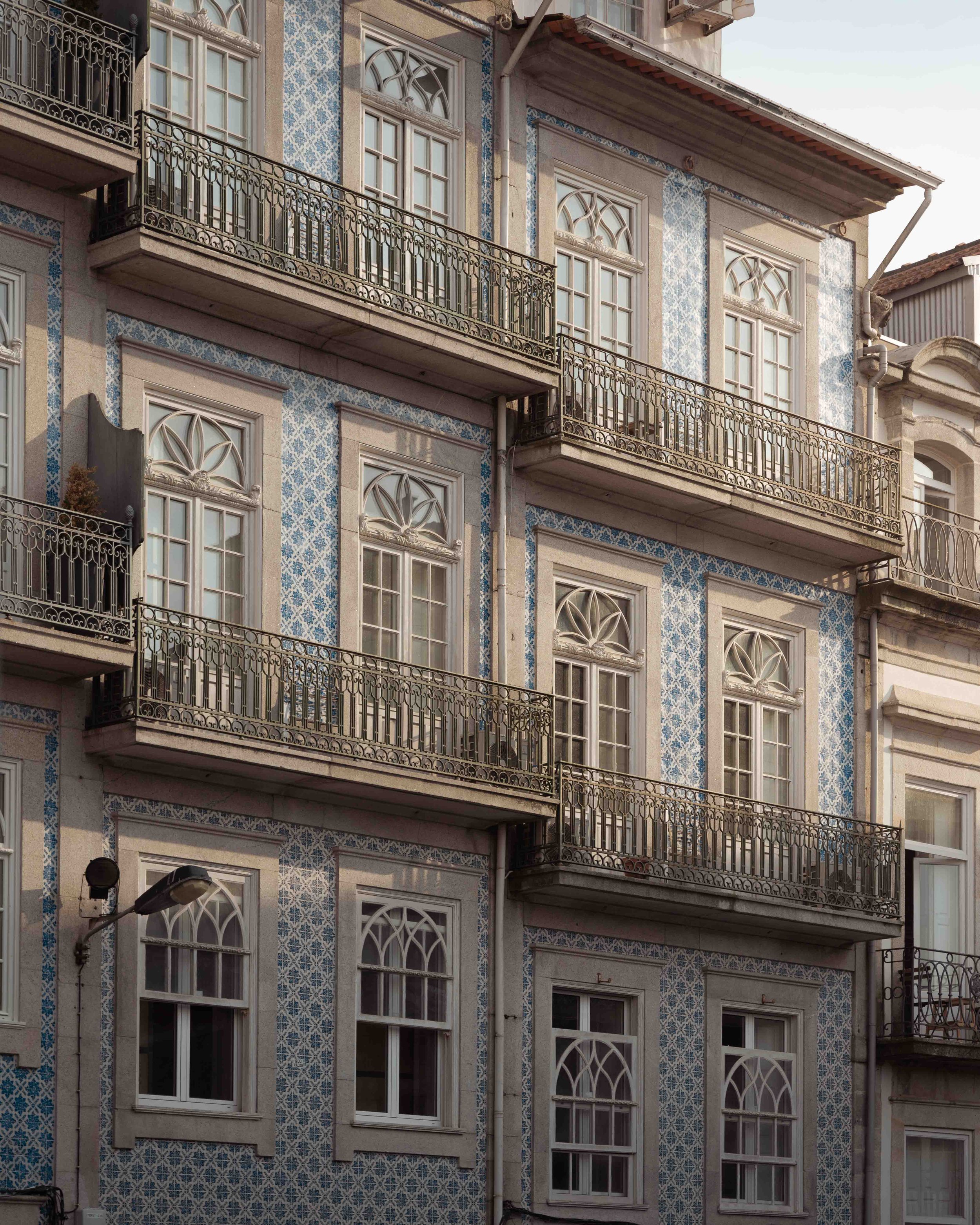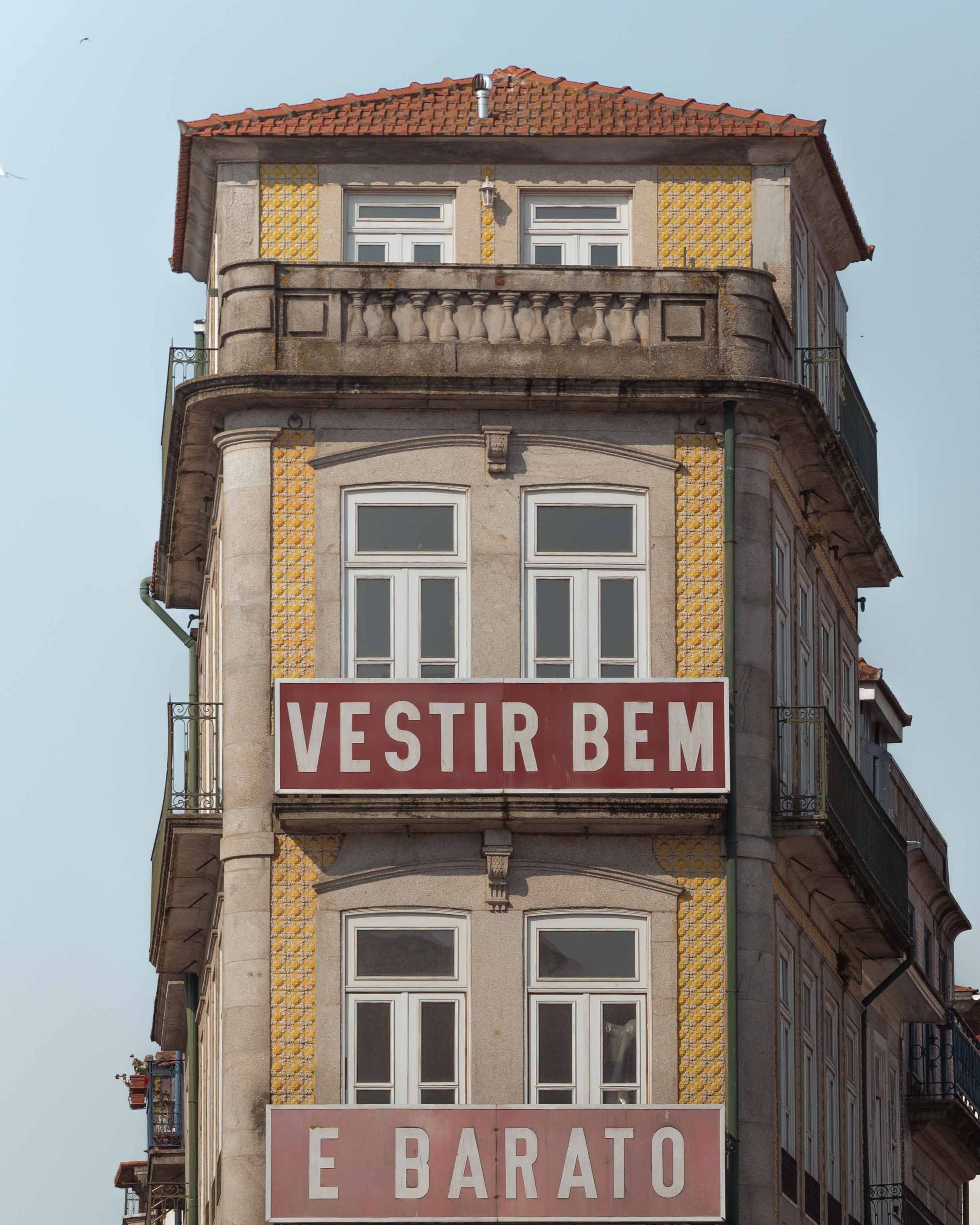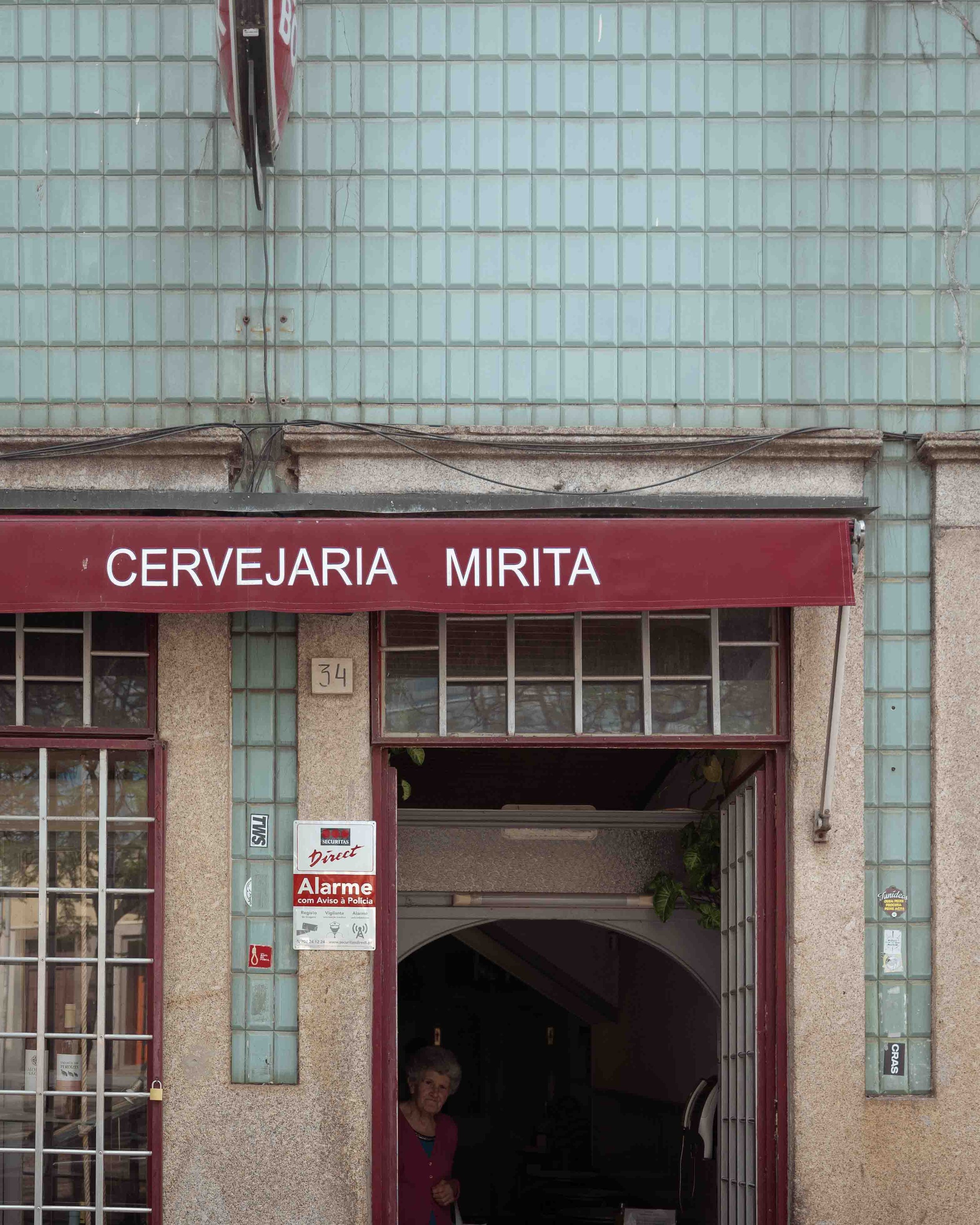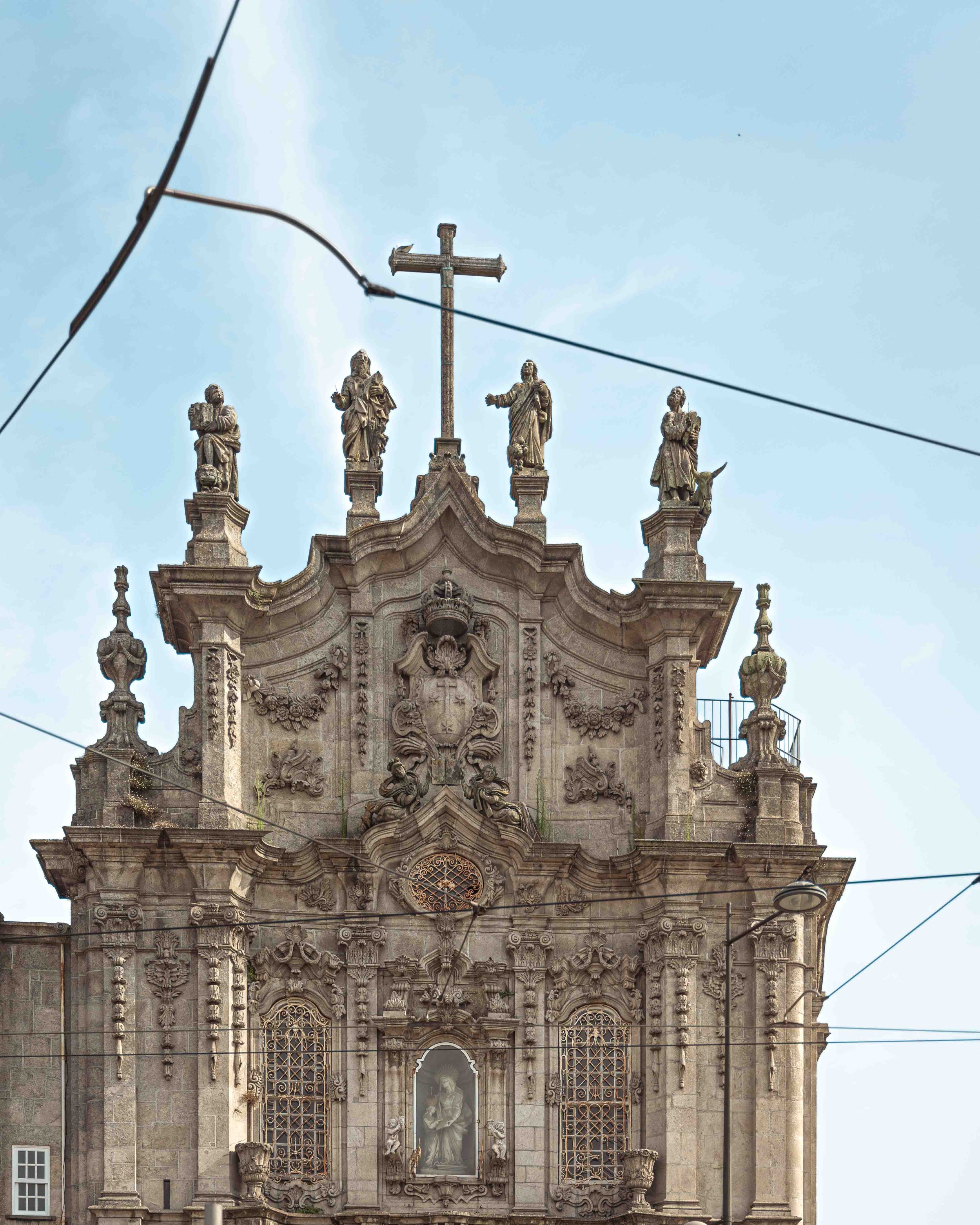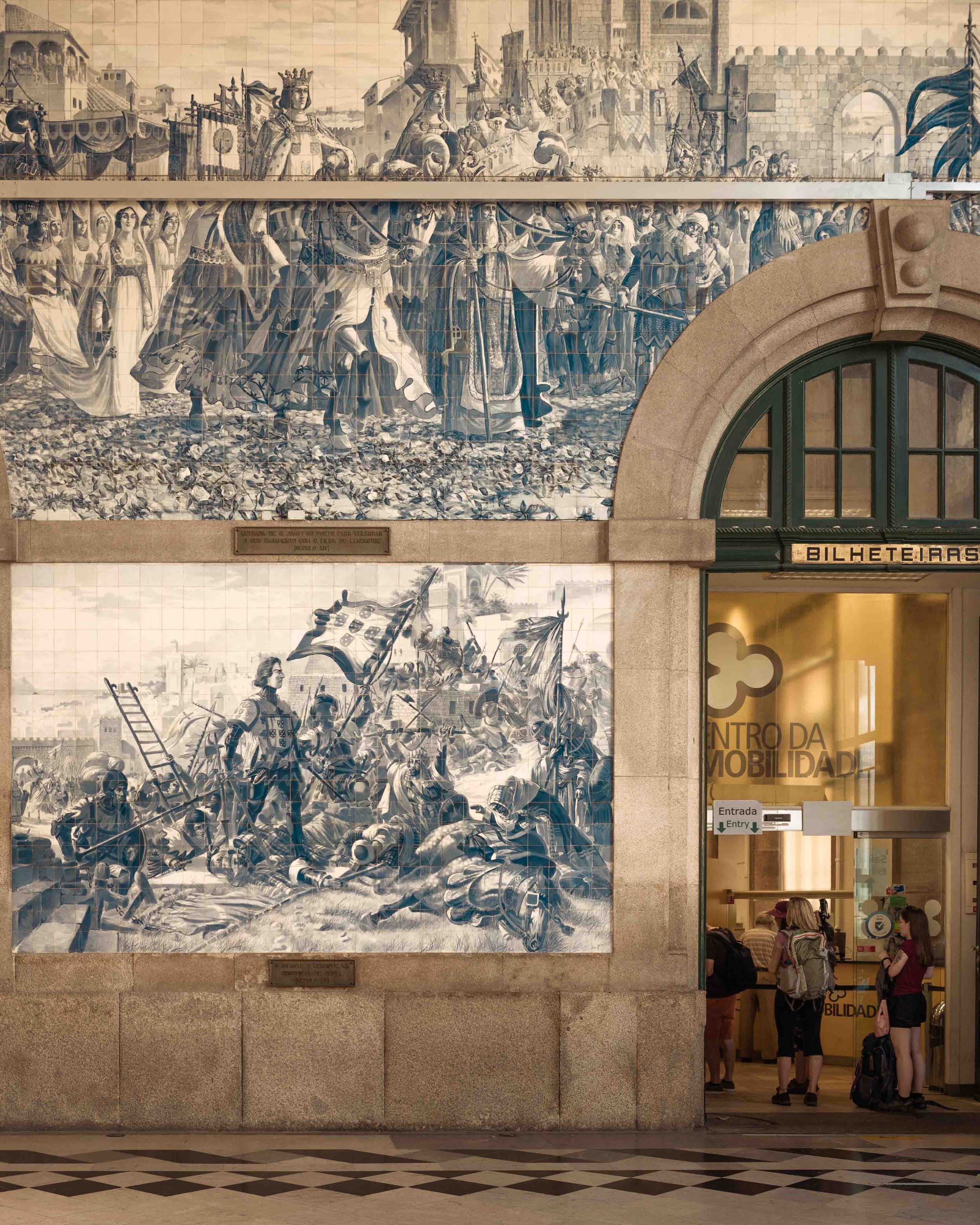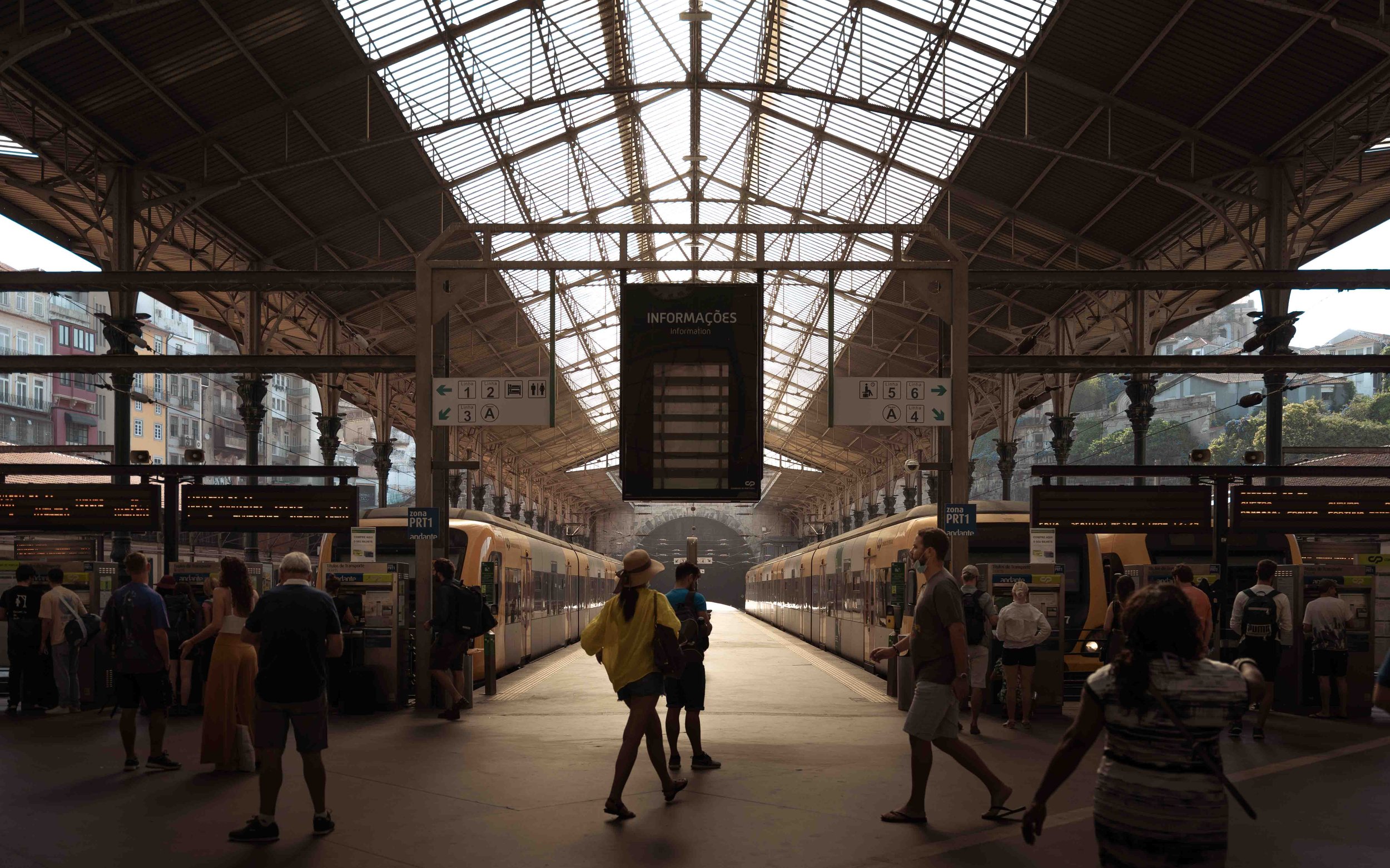Azulejos - Where to find Portugal’s beloved tile in Porto
Glossy and colourful, gently reflecting the light of a sun-kissed country, dancing in lively patterns as one strolls down ancient streets, tiles are one of the defining ingredients of Portuguese aesthetics.
Given you're reading this, chances are you have seen images of the astonishing blue-and-white panels decorating some of the country’s most distinguished buildings, but the reality is that tiles are practically everywhere in Portugal. Squared or rectangular, utilitarian or ornamental, plain or patterned, they embellish not only exterior and interior walls of important religious and secular buildings, but also apartment blocks, shops and restaurants, street signs, nameplates, and house numbers.
During my exploration of Porto, I couldn’t help but feel wrapped in the cheerful embrace of their shiny surfaces and bright hues. I was enchanted by them.
Contents
I wouldn’t do azulejos justice if I didn’t give a little background on their history and use. They may be a Portuguese icon, but these tiles, as you will find out, are in fact a multicultural recipe.
A history of azulejos
You will be excused for thinking that azulejos are only the iconic blue-and-white ceramic squares that make the cover of travel magazines. I know I thought that before doing some background research. But the term is quite wide and denotes a type of tile that has evolved steadily throughout history.
The word itself comes from the Arabic for “little polished stone” and it shouldn’t come as a surprise that azulejos were introduced into the Iberic Peninsula by the Moors (who had learned the art from the Persians) during their rule. At that stage, small tiles of different individual colours were interlocked to form geometric patterns called alicatados. During the 13th century these spread quickly in what is now Spain, and some exquisite examples can still be seen in Granada’s Alhambra and Sevilla’s Alcazar.
News of this type of decoration reached Portugal only when King Manuel I visited Sevilla in 1503, and imports of azulejos quickly followed. By then, a new technique called cuenca had been adopted to create relief patterns on the tile itself, so that different colour glazes could be applied without bleeding onto each other.
Italian potters working in 16th century Spain then decided to also chip in (of course we had to contribute!) by introducing majolica, a game-changer in tile manufacturing. This technique, where colours are painted directly onto a white enamel background, brightened the tiles and gave potters larger figurative freedom. It is at this point that Portugal officially embraced the production of azulejos, ditching imports and supporting its own masters.
Larger tile compositions started appearing in churches and palaces, where subjects ranged from the lives of saints to landscape views. Azulejos had become all the rage.
The growing demand of the 17th century led to imports of blue-and-white tiles from the Dutch city of Delft, and the colour combination soon became a strong favourite. When King Peter II forbade the import of foreign tiles in 1687, Portuguese workshops were ready to take over and supply the market. By this stage the level of craftsmanship had soared enormously, and artists had developed the ability to adapt their scenes around buildings’ architectural features, sometimes even using them to enhance their subjects.
And that is one of the main identifying traits of Portuguese azulejos: the harmony between architecture, design, and subject. The story is strongly intertwined with the identity of the tiled place, and the representation makes use of the shape of the surfaces being decorated. For example, the church dedicated to a saint will probably feature panels illustrating episodes from the patron's life. And the light flowing from a real window in the middle of the tiled wall will play the role of the divine light bathing the saint's face during a vision.
The 18th century brought a further increase in demand, partly coming from the Portuguese colonies, partly due to a devastating earthquake in Lisbon in 1755 and the consequent city reconstruction. Tiles were seen as part of a practical, less expensive way of building, and they soon made their way into common residential and commercial spaces.
This democratisation of the use of azulejos, however, came at the expense of industrial production and reduced quality.
Most of the 19th century saw a stagnation in the industry, but the advent of tile-loving Art Nouveau and Art Deco movements reversed that and rekindled the Portuguese penchant for the glossy squares. Like in the first days of azulejos, the larger and more artistic projects involved notable edifices, both religious and secular, but shop fronts, apartment buildings, and residential interiors were also eventually affected by the revived fashion of shiny surfaces. The majority of Porto’s masterpieces date back to this second wave.
The latest evolution of azulejos can be observed in the modernist designs of nineteen of Lisbon’s metro stations, decorated by Maria Keil in patterns that may be original and new in concept, but often still reference the good old white and blue traditions.
They may have been around for a few centuries, and they may have changed through time, but there is no sign of tiles losing their sweet spot in Portuguese hearts.
And in that there is much to rejoice.
Where to find azulejos masterpieces in Porto
What follows is a list of the most renowned azulejo masterpieces in Porto, listed in my personal order of preference – top to bottom.
Capela das almas (Chapel of Souls)
One needs to push their visualisation skills to the limit to imagine what the exterior of this 18th century chapel looked like before receiving the azulejos treatment. The facade and the lateral wall of the building now almost disappear behind what seems an enormous canvas decorated in a riot of blue and white. I dare anyone to miss it. Just like you can’t miss it on social media.
The job to decorate the chapel fell on watercolourist and ceramicist Eduardo Leite, while the tiles came all the way from a renowned factory in Lisbon. Despite the panels dating to 1929, the style that Leite chose to adopt was the traditional 18th century one, presumably to be consistent with the age of the building. The resulting masterpiece is made up of 15,947 azulejos and illustrates the lives of various saints through selected religious stories; most of the limelight is reserved to Saint Francis of Assisi and Saint Catherine. All around each scene are grand friezes and angels galore. Monumental is the word.
THE LOWDOWN
WHERE
Capela das Almas
WHEN
The azulejos can be seen at all times on the exterior of the chapel
The chapel is open Mon-Fri 7.30am-6pm | Sat-Sun 7.30am-12.45pm and 6pm-7.00pm
PRICE
Admission to the chapel is free
Igreja do Carmo
One of Porto’s largest panels of azulejos embellishes the side of this Rococo church. Added to the 18th century building in 1912, the tiles were manufactured locally in Villa Nova de Gaia, and painted by Carlos Branco on a design by Silvestre Silvestri. What is represented is the story behind the scapular, one of the Carmelitans’ strongest symbols. According to the legend, Saint Simon received a brown scapular (a sort of long apron fastened on the shoulders) from the Virgin Mary in an apparition. Smaller scapulars are also shown being given to a crowd of devotees against the background of Mount Carmel, another symbol of the order. Silvestri designed a Rococo frame around the scene to tie in with the architectural style of the church.
As you stand in front of it admiring the sheer size of this work of art, don’t forget to also appreciate the composition. The way the design elements are laid out between windows, doors and other architectural components is incredibly clever.
THE LOWDOWN
WHERE
Igreja do Carmo
WHEN
The azulejos can be seen at all times on the exterior of the church
The church is open Mon-Fri 11am-6pm | Sat-Sun 11am-3pm
PRICE
Admission to the church is free. There is the option of visiting museum, catacombs and tiny next door Casa Escondida for €3.50.
São Bento Train Station
The most immersive experience of azulejos is without a doubt delivered by São Bento Station, where one is literally surrounded by them. The walls of the main hall are clad by colourful tiles in multiple tiers, each telling a different, beautifully painted, story.
It took eleven years (between 1905 and 1916) to produce and install the approximately 20,000 tiles forming celebrated artist Jorge Colaço’s masterpiece, and the tiling work happened at the same time as the building construction. Subjects range from important chapters in Portuguese history and folklore, to scenes of work in the countryside, to railway-related allegories.
The larger panels decorate the walls left and right of the main entrances. The left side features the Battle of Valdevez (1140) and, below, the meeting between the knight Egas Moniz and Alfonso VII of León in Toledo (12th century). The right side displays the arrival in Porto of Dom Joao I and Philippa of Lancaster (1387) for their wedding and, below, the conquest of Ceuta (1415).
A colourful frieze runs along the top portion of the four walls and depicts various forms of transportation throughout history.
The conservation work done on these azulejos is admirable, and the colours shine as bright as they probably did over a century ago. The energy and movement in the scenes represented are both fitting for a busy railway station and testament to Colaço’s artistic skills.
THE LOWDOWN
WHERE
Porto São Bento
WHEN
The azulejos can be seen at all times in the main entrance hall. I visited the station early enough to avoid the group tours that stop there; I do wonder how locals cope with having to rush for a train while negotiating all the tourists ambling oblivious of the place’s primary purpose. When you visit, try to be mindful and stand against the wall between the front entrances; from there you can admire the azulejos without getting in anybody's way.
Sé do Porto (Porto Cathedral)
Porto Cathedral's fortified looks would easily lead one to expect armours rather than ornate tiles inside, but this national monument has its fair share of glitz. Built over a period stretching between the 12th and the 16th centuries in the austere Romanesque style, the church was repeatedly altered throughout its history. The 18th century Baroque fashion yielded most of the building’s decorations, including a tiled loggia and the addition of azulejos to the 14th century Gothic cloister.
The latter is a dense medley of pillars and arches where every flat vertical surface is a symphony in blue and white. These azulejos are the work of Valentim de Almeida, and they represent stories from the life of the Virgin Mary. De Almeida is also the artist behind the panels on the cathedral upstairs terrace, illustrating chapters from Ovid’s Metamorphoses.
What I love about these panels is that they are at least 150 years older than the other, usually more celebrated, examples in the list, and are surviving evidence of the Azulejo Golden Era. One can clearly see where Eduardo Leite found his inspiration for the Chapel of Souls.
THE LOWDOWN
WHERE
Porto Cathedral
WHEN
The Cathedral is open every day on the following hours: 9am-6.30pm Apr-Oct | 9am-5.30pm Nov-Mar. The only closing days are Christmas Day and Easter Sunday.
PRICE
Admission to the Cathedral is free. Admission to the cloister costs €3.00.
Igreja de Santo Ildefonso
Located at the upper end of Praça da Batalha, you would need to make a conscious effort to ignore this church. And that is partly because of its elevated position dominating the square, partly because of its majestic size, partly because of its azulejo-adorned façade.
Tiles were a later addition to the pre-existing 18th century building as in most previous examples. Installed in 1932 and the work of Colaço (yes, the same artist behind the decoration of the railway station), the azulejos panels portray moments from the life of patron Santo Ildefonso and some stories from the Gospel. There are some very fine decorations around the windows and a lovely yellow and blue filigree frame.
The panels may not be as intricate as in the Chapel of Souls, and some of the tiles are starting to show the signs of time, but the grandeur of the architecture makes up for it. While azulejos in some cases add a decorative layer to otherwise simple buildings, in the case of Santo Ildefonso they lighten and liven up what would have been an imposing and stern granite building.
THE LOWDOWN
WHERE
Igreja de Santo Ildefonso
WHEN
The church opening hours are: 3pm-6pm Mon | 9am-12pm & 3pm-6.30pm Tue-Sun.
PRICE
Admission to the church is free.
